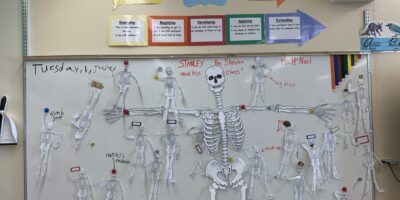Curriculum as defined by the Merriam-Webster Dictionary is “the courses offered by an educational institution” and “a set of courses constituting an area of specialization” (Curriculum, n.d.). When taking the definition into mind, and what BC’s New Curriculum states, we can take a look to see if BC’s curriculum is praxis or not. Praxis is defined as the “collective wellbeing and emancipation of human spirit” (Smith, 2000). By being able to think critically and in action, understand the rules and expectations, and be able to evaluate the process in order to see outcomes. While I believe that BC’s curriculum is being designed to include all the components of praxis, I think that it will still be some time before we can state that BC’s education system is designed that way. Curriculum for some is planned and guided, which BC still focuses on by stating that as educators (and administrators) there are certain criteria that must be met in order for students to be able to pass or understand the information being taught. The process to get BC’s curriculum means that all educators, administrators, board office, and all the other people involved in the education system must believe and teach in the way of praxis. That can be taught to the younger teachers going through their own education journey, but that change can not be forced on older teacher. By saying that I mean that for a teacher who has been teaching in the education system for 20 years may have a harder time understanding, or wanting to make that switch verse a new teacher who does not know what the past ways look like and can only teach the new praxis models. That is why I believe while BC’s curriculum could be praxis, it is not fully there yet, but is attempting and pushing to make those changes in order to offer a better education system to the students in K-12.
I think that formative and summative assessment will support the progress of BC’s curriculum reaching a praxis model. Formative assessment is “the gathering of data for improving student learning” and summative assessment “uses data to assess about how much a student knows or has retained at the completion of a learning sequence” (Dixson & Worrell, 2016, p.153). I think that it will be the combination of both that will help BC’s curriculum succeed and grow to be a new standard that all educations systems will follow. I wish I was optimistic and saying that summative assessment would eventually fall out altogether and we could only work on a formative assessment level, but I honestly do not think that will be the case, at least for while I will be teaching. As a whole the education system, including BC’s curriculum while moving in a praxis and formative direction, will not be able to escape summative assessment until all forms of education agree to follow this method. That means pre-K, K-12 and post-secondary institutes do not follow a standard grading system like it currently does. We cannot only teach our students on a formative level and then send them off to university where they will be graded on summative assessment. I do not believe that going from one extreme to the next will set any student up for success.
To help develop a co-existing formative and summative assessment model, I think BC is moving in the right direction. Summative sets a standard that students should be reaching, and using tests at the end of instructional lessons, and final exams shows the knowledge that students have learned. Formative assessments are being used but I do not think to their full potential by all teachers and administrators. Formative assessment is a great way for students to show the information they have learned and demonstrate it in a way that makes sense to them. I think by combining summative and formative assessments it could be possible to make multiple different summative tests using a formative method that would allow all learning types to demonstrate the information they have learned over the curriculum. While saying that I am very aware that would be tons of work for teachers, but at the same time I believe we should be making that effort for students to show how they meet BC’s curriculum standards in their own unique way of learning.
“Curriculum.” (n.d.). Retrieved from https://www.merriam-webster.com/dictionary/curriculum?src=search-dict-hed.
Dixson, D.D. & Worrell, F.C. (2016). “Formative assessment and summative assessment in the classroom.” Theory into Practice, 55(2), 153-159. https://doi.org/10.1080/00405841.2016.1148989.
Smith, M.K. (2000). “Curriculum theory and practice.” The encyclopedia of pedagogy and informal education, https://infed.org/mobi/curriculum-theory-and-practice/.



Leave a Reply